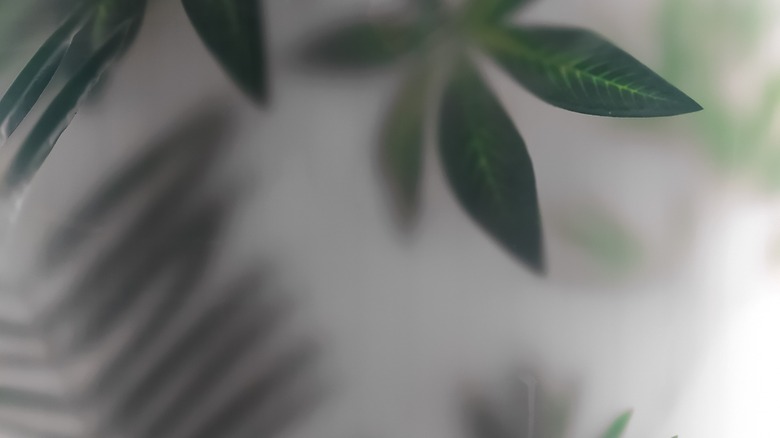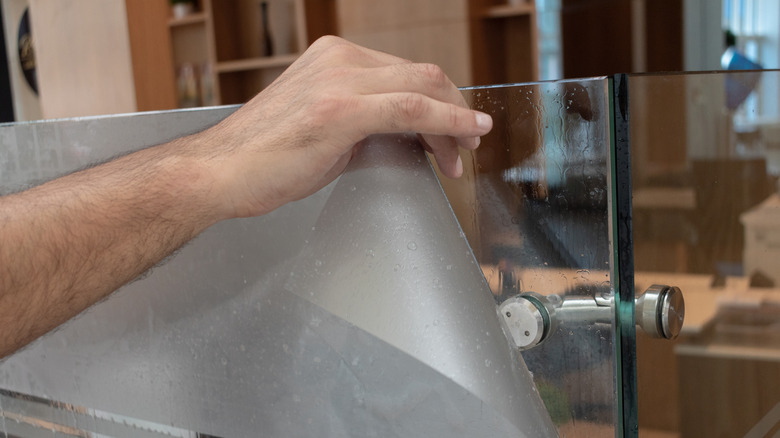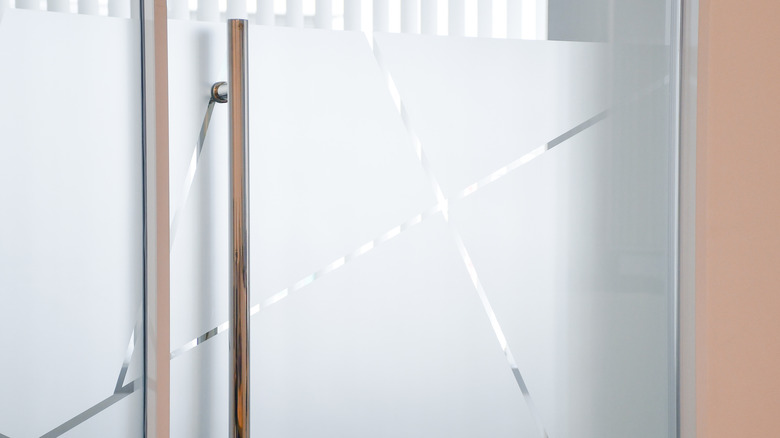How To Frost Your Windows For Maximum Privacy
Have you heard of frosted glass before? According to BUILD, frosted glass is common among designers in both commercial and residential settings as a type of glass that provides both light and privacy. They also note that frosted glass is easy to clean and is a great substitute for other window treatments such as blinds or curtains. They explain that you can frost both annealed glass and toughened glass. Annealed glass is the typical clear glass used commonly, whereas toughened glass is a much stronger alternative.
If you're thinking about adding frosted glass to your home, office, or anywhere else, you've come to the right place. We've compiled a list of various ways you can opt for, including a couple of do-it-yourself hacks. Each method offers its own unique set of pros and cons, so make sure you keep reading to figure out which method will work best for you.
DIY frosted glass
As Masterclass explains, etching cream is one way you can go. They note that etching at home is most effective for creating frosted patterns in glass using a stencil or when used on smaller surfaces. It is important to practice on a tiny section of the glass first before moving on to working on bigger portions. When working with etching cream, you should always protect your skin by using gloves since the cream should never come into contact with your bare hands.
Bunnings suggests window film as an affordable way to add privacy to any room. They note that it's important to clean your glass with shampoo and water before applying the film. Next, you can go on to stick the film onto your window, making sure that it's cut to the right size. They recommend working with a damp window surface so the window film is easier to maneuver.
Traditional frosted glass
If you're not keen on going down the DIY route, don't worry. As McCoy Mart explains, sandblasting is a technique professionals use to frost glass. It involves the insertion of sand or a similar material into the glass at a very high speed using special equipment. The sand disturbs the surface of the glass, creating a frosted appearance. This method can achieve various degrees of transparency, depending on how fast the sand is blasted onto the glass. Sandblasting, however, may cause the glass to become brittle and more prone to fracture, particularly in severe weather.
Acid-etched glass is another professional-grade type of frosted glass, as the Dillmeier Glass Company explains. They note that acid-etched glass is an annealed glass with hydrofluoric acid applied to its surface after the annealing process. This gives the glass a frosted appearance. Acid etching may be done to whole sheets of glass, or it can be done to smaller areas of glass to create particular patterns. It is generally agreed that acid etching is superior to sandblasting because the end surface is less rough to the touch. It also requires less upkeep and is better able to handle tension.


